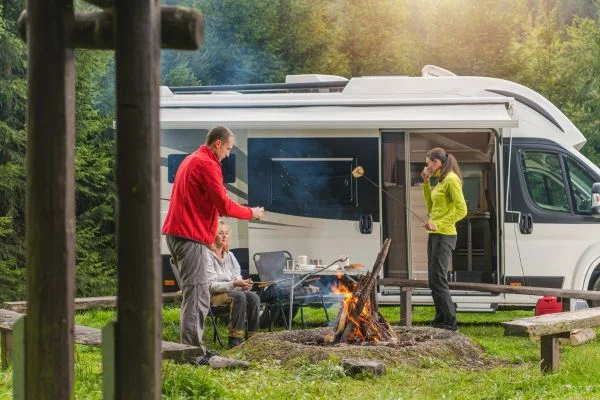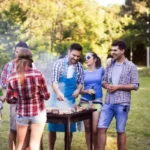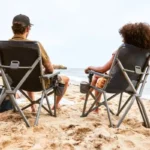Cooking food while camping is one of the best parts of being in the wilderness. It’s also great to share your love for nature with friends and family. However, it can be difficult to cook food on the trail—especially if you’re solo camping or new to the activity. That’s why we’ve put together this guide for how to cook food when camping: from what kind of stove you’ll need down to where you should store your cooking utensils and pots when not in use!
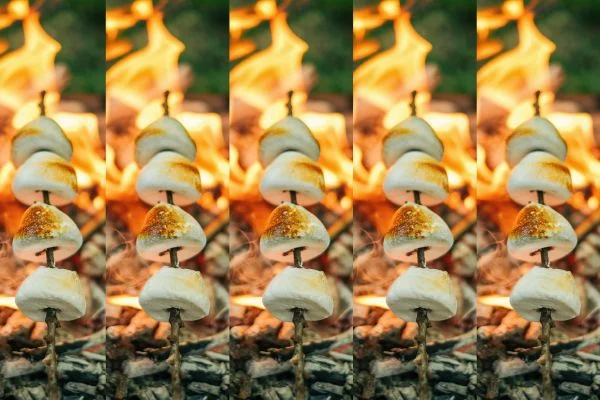
Camping Site Food Prep Tools.
There are several tools that you can bring with you on your camping trip to make cooking easier. Some of these tools include:
- Grill tongs: These are used to turn meat and vegetables while cooking over an open flame. They can also turn hot dogs and marshmallows over the coals if there’s no grill available.
- Pot holder: This is an essential tool for camping cooking since it protects your hands from getting burned from hot pots and pans on top of open flames or grills. Pot holders come in many different colors and designs to match any style or theme of tent or other gear you have!
- Spatula: Spatulas are great for flipping pancakes, burgers, or other foods cooked on an open flame or grill!
Read More: What Food To Pack For Camping
How to Cook Food When Camping: Essential Tips
If you follow the right preparation and techniques, you can make delicious and satisfying meals while you are camping. To ensure a successful outdoor cooking experience, here are six essential tips you need to know:
Plan Your Menu in Advance:
You should create a meal plan that includes breakfast, lunch, dinner, and snacks. Pack your ingredients in portions-sized containers and choose recipes that are easy to prepare while you are camping.
Choose the Right Cooking Equipment:
Prepare your camping menu by selecting the right cooking utensils and camp cookware for your trip. It is essential to have a portable camp stove, cookware with lids, and utensils that can withstand high temperatures when camping. If you are planning to cook over an open flame, make sure you have a reliable campfire starter with you.
Pack Non-Perishable and Shelf-Stable Foods:
Consider buying non-perishable foods such as canned goods, dried fruits, nuts, and instant meals instead of perishable items. There are several advantages to using these items since they are lightweight, require minimal refrigeration, and have a longer shelf life.
Master One-Pot and Foil Packet Recipes:
Cooking can be made easier by making recipes that only require one pot or by using foil packets. By using these methods, you will be able to reduce the amount of cleanup and make meal preparation more manageable. There are many recipes you can use to cook on a campfire such as stir-fry in a skillet or veggies and protein wrapped in foil.
Bring Essential Seasonings and Condiments:
Put a little spice into your meals with these compact containers of essential seasonings such as salt, pepper, and your favorite spices. If you want to give your meal a little extra flavor, don’t forget to pack condiments like ketchup, mustard, and hot sauce.
Practice Good Food Safety and Hygiene:
If you are unable to access water, use a hand sanitizer instead of washing your hands before touching food. A portable cooler with ice packs is a great way to keep perishable foods cool. It is important to cook meat thoroughly to a safe temperature in order to avoid cross-contamination.
In order to ensure a memorable culinary experience in the great outdoors, here are some essential tips you should consider to ensure delicious and hassle-free meals while camping. Now you know about essential tips for how to cook food when camping.
Consider Alternative Cooking Methods:
For outdoor cooking, there are alternative cooking methods that are often more practical and energy-efficient than electric kettles. Here’s what you can do:
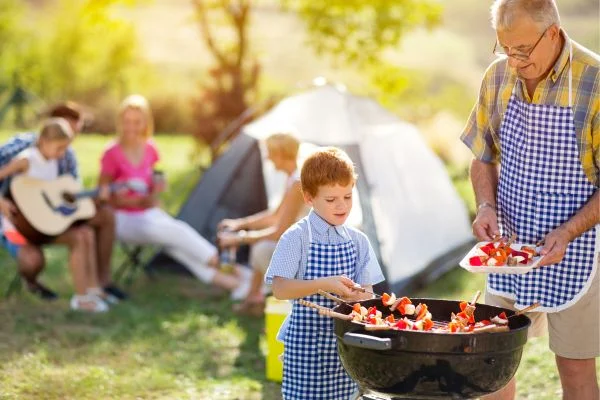
1. Camp Stove or Backpacking Stove:
Outdoor stoves are great for boiling water, so they’re great for preparing hot drinks or rehydrating dehydrated food. You can get them in different sizes and fuel types, like propane, butane, or multifuel.
2. Portable Propane Stove:
You can cook with portable propane stoves because they’re easy to use. These are commonly used for camping and come with single or dual burners. You can cook with propane stoves for a variety of things beyond boiling water.
3. Campfire Cooking:
When you’re camping, you can cook over a campfire. Campfires are great for heating water, cooking meals in pots or on grates, and roasting marshmallows. Make sure you follow Leave No Trace principles and check your area’s campfire laws.
4. Wood-Burning Stove or Rocket Stove:
A wood-burning stove or rocket stove burns small pieces of wood or biomass efficiently. The fuel sources are readily available, so they’re perfect for camping and outdoor cooking.
5. Portable Grills and Barbecues:
You can cook a lot of food outside with portable grills and barbecues. The grills are available in a range of materials, such as charcoal, propane, and even electricity. There are a number of uses for these heaters, including heating water and preparing hot meals.
6. Dutch Ovens and Camp Cookware:
You can cook with Dutch ovens over an open flame or with charcoal briquettes. You can slow cook, simmer stews, bake, and more. Cooking over a campfire is made a lot easier with Dutch ovens.
7. Solar Ovens:
It is an eco-friendly option to use solar ovens when you are camping since they use sunlight to cook the food slowly. They are ideal for camping situations as they are suitable for preparing meals that do not require rapid boiling, which makes them an excellent choice for certain food preparations.
8. Non-Cooking Alternatives:
There are some camping scenarios where you don’t need to cook. In addition to packing ready-to-eat meals, energy bars, trail mix, and other foods that only require minimal preparation and do not require cooking, consider packing ready-to-eat meals.
For your camping trip, you need to choose the right cooking method based on your location, the duration of your trip, the type of meals you plan to prepare, and your personal preferences. Your camping adventures can be enhanced by exploring different cooking methods.
Read More: How To Plan Camping Food With Multiple Families?
First Aid Kit For Emergencies:
A first aid kit is essential for any trip, but it’s essential when camping. If you’re not sure what to pack in your kit, here are the basics:
- Adhesive bandages in various sizes
- Antibiotic ointment
- Ace bandage
- Alcohol wipes and pads (for cleaning cuts and scrapes)
- Antidiarrheal medication (like Immodium)
- Anti-itch cream or lotion (like Benadryl)
- Aspirin or Tylenol (for aches and pains)
- Blister care kit (including scissors)
- Burn cream or gel (like Neosporin)
Conclusion
It’s easy to think you can’t cook while camping, but many tools are available to make it easy. You need to be prepared for the worst-case scenario when using them. It would be best to have all of these items before leaving home, so you don’t get stuck with anything when trying out new recipes.

